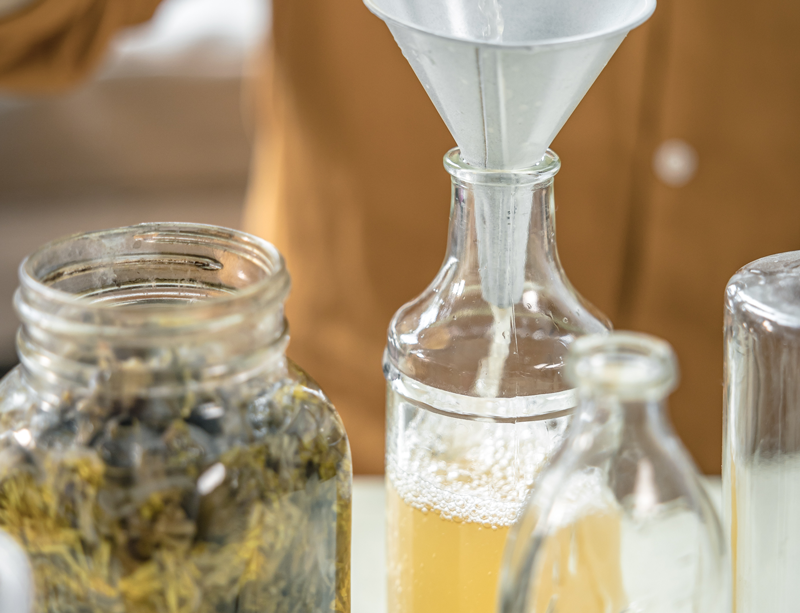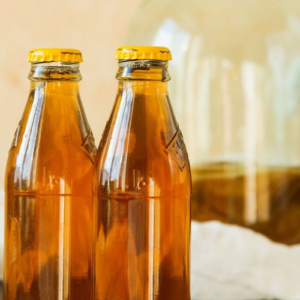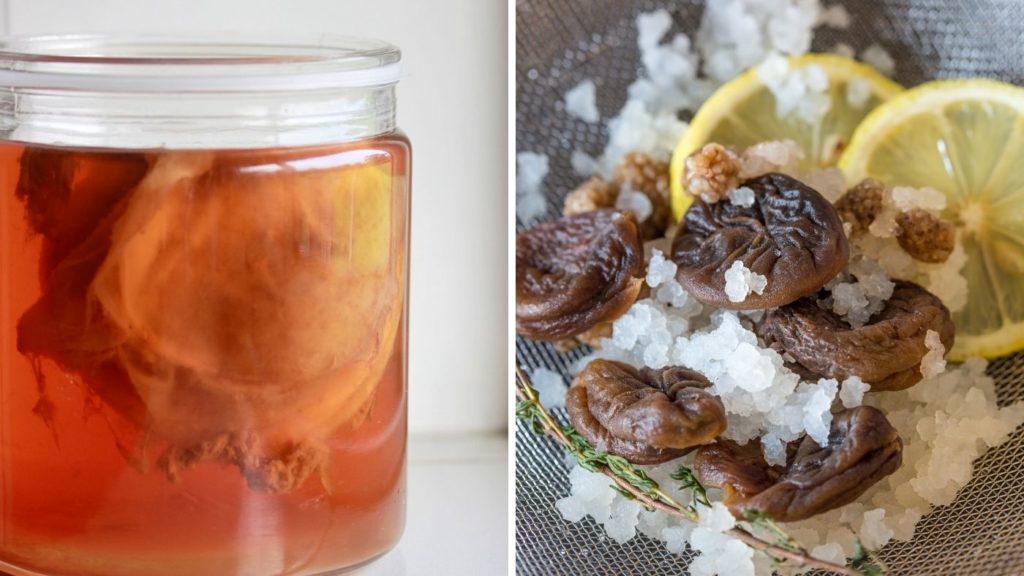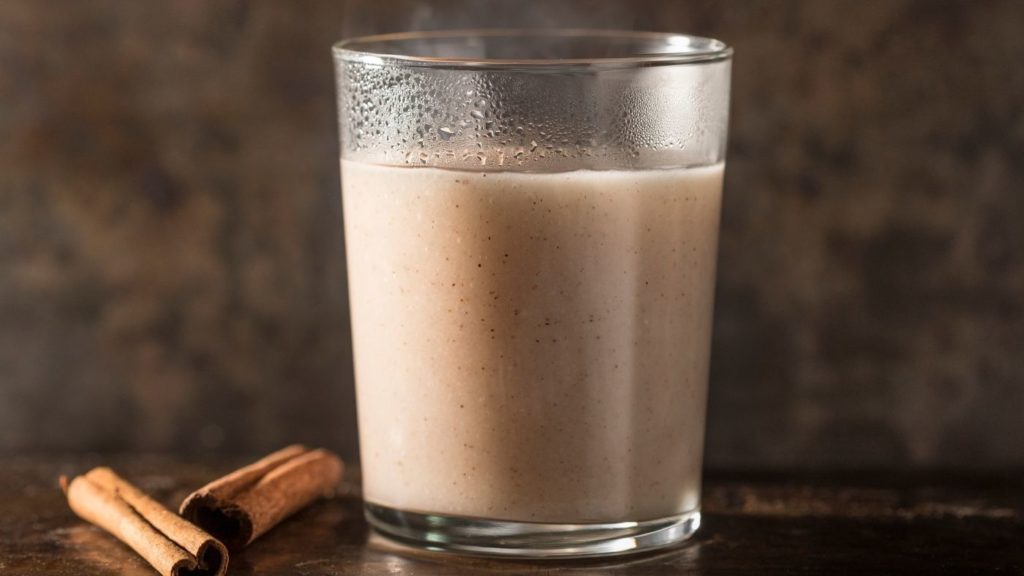Learn how to turn your homemade kombucha into delicious vinegar with this easy recipe!
Kombucha is a fermented drink made from sweetened tea. It is usually slightly sweet, tangy, and fizzy.
However, any kombucha left to ferment will gradually turn into vinegar!
Making kombucha vinegar is a great way to recuperate a kombucha recipe that has been forgotten for too long. If your kombucha is too sour for your taste, don’t throw it away: turn it into vinegar!
Very easy to make, kombucha vinegar offers the same health benefits as apple cider vinegar.
Rich in probiotic bacteria, kombucha vinegar also offers the benefits of tea (antioxidants) and contains powerful organic acids.
In cooking, kombucha vinegar can replace any vinegar (cider, white, etc.). It also provides a base for creating all kinds of flavours.

Why Is My Kombucha Too Vinegary?
If you forget your kombucha for a little too long, it will quickly become too sour to drink.
During the fermentation of kombucha, two transformations occur simultaneously:
- The yeasts transform the sugar into alcohol and CO₂
- Bacteria convert the alcohol into acid
When making kombucha, we stop the fermentation after about a week to have an effervescent, slightly vinegary, and somewhat sweet drink.
If you let the fermentation go on, almost all the sugar in the kombucha will be turned into acid.
This is how kombucha vinegar is made!

How to Make Kombucha Vinegar?
Ingredients
- 1 kombucha scoby and its liquid culture (about 350ml)
- 12 g plain tea (6 tbsp.)
- 200 g sugar (1 cup)
- 2.5 L chlorine-free or filtered water
Steps
Preparation
- For 500ml of boiling water into the jar and add the tea. To facilitate brewing, use tea bags or a nylon filter bag.
- Let it brew for about 10 minutes. Remove the tea.
- Add the sugar and stir until dissolved.
- Add the remaining water to make a total of 3 litres (your tea should be lukewarm).
- Add the kombucha scoby with its liquid culture.
- Cover the mouth of the container with a cloth and rubber band.
- Put in an airy place, away from light and at room temperature (ideally between 20°C and 30°C).
Fermentation
- Ferment for at least 70 days; the vinegar will become tastier and more acidic with time.
- After 70 days, remove the scoby and gently strain the kombucha vinegar through a nylon filter over a jar to remove particles. Do not stir the bottom of the fermentation container: you do not want yeast in the vinegar, as it will eventually die and give a bad taste.
Bottling
- Place the clean bottles in the sink. Using a funnel, fill them up to 1 cm from the neck.
- Store at room temperature. Kombucha vinegar will not become fizzy if fermented long enough.
Notes
How to Make Better Kombucha Vinegar?
Here are some tips to optimize the fermentation of your kombucha vinegar.
Aeration
The bacteria that produce the vinegar need oxygen to turn the alcohol into acid. To do so, place your fermentation jar in a well-ventilated area. Avoid closed cupboards!
Want to experiment? You can speed up fermentation by installing an aquarium air pump in your kombucha. Fermentation time can be shortened to only 1 or 2 weeks.
Temperature
The ideal temperature for vinegar production is between 25 and 30°C. Lower or higher temperatures will give good results, but the fermentation time will be longer.
Time
It is important to let your kombucha vinegar ferment sufficiently so that all the sugars are converted into alcohol and then into acid.
A too-short fermentation will result in a kombucha vinegar with residual sugars and fizz in the bottle.
Flavouring
It is possible to flavour your kombucha vinegar the same way you would flavour kombucha.
However, if you wish to add sweet ingredients during flavouring (such as fruit), then it is best to add them at the very beginning of the fermentation so that the sugars are transformed during fermentation.
Kombucha vinegar can also be used as a berry shrub base. To prevent the fermentation from restarting with the addition of sugar, you may choose to heat the vinegar before use to pasteurize it.
Want to know more about making artisanal vinegar? Check out our complete guide to homemade vinegar!
How to Use Kombucha Vinegar?
The acidity of kombucha vinegar is a little less strong in the mouth than commercial vinegar. To use it in a recipe, double its quantity.
It replaces apple cider vinegar, white vinegar, and many other types of culinary vinegar in salad dressings, marinades, or mayonnaise.
Kombucha vinegar can also extract aromatic and medicinal compounds from plants when used to make a scoby tincture.
Diluted in a glass of water, it is also an excellent morning tonic!
Kombucha vinegar can also be used outside the kitchen. Some people use it in their household cleaners and stain removers, or to degrease the microwave or sink.
So, when you like kombucha vinegar… you can use it everywhere!

